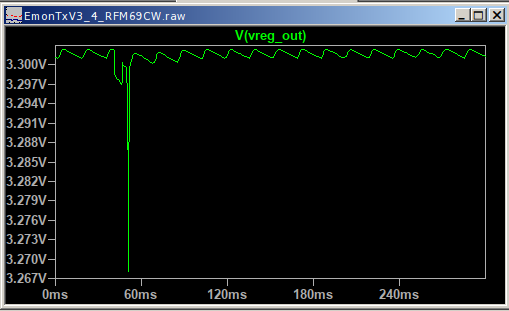I’ve taken a screenshot of your pdf so we can see the graph without downloading etc.
To add to Roberts comments, on top of the sample rate and 10s averaging at source, you also have a very low resolution graph, the sample rate there is 3600s, so of each 360x10s datapoints recorded only one is displayed. That could be up to an hour either side of the voltage drop. If you zoom in you might get a very different picture.
But, it isn’t guaranteed to show exactly what we might hope, don’t forget that last good data point before the drop out is not the point at which it failed, the point at which it failed will never be caught in data, because it has failed.
My hope was that checking the graph would perhaps just show that failures tend to occur at times of low voltage, which I think appears to be the case.
In addition to the possible “bad luck” with regard to component tolerances and the voltage drops, the high ambient temperature might (or might not) also be adding to your woes, is the emonTx or the AC adaptor located where it might be getting hotter than it needs to be? eg is it a ventilated area? Is it in direct sunlight? Do you recall if it happens during the cooler times of day?
It would indeed, you might also consider trying to make it run cooler some how to see if that has any impact, shade it, open the cabinet door, put a fan on it temporarily etc, perhaps as a separate test though.
Although, I have to say, I would personally opt for the USB method either way, in fact I would have probably installed it that way from the outset. The option of eliminating any possibility of RF dropouts and getting a more accurate AC waveform without adding another PSU to the mix (more heat, more energy consumption and another power outlet occupied). Depending on how far you want to roll your sleeves up, I would probably adapt the emonpi sketch from 2CT to 4CT and then hook up the emonTx direct to the Pi’s GPIO in place of the RFM69Pi and receive the emonTH’s via the emonTx (thus no USB adaptor is needed). Obviously this is far more involved and only an option if your RFM module on the emonTx is A OK.

